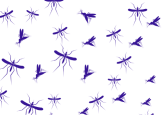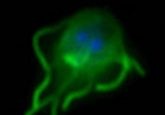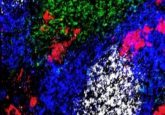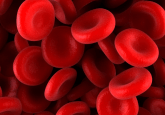Uncovering a promising target for malaria therapeutics

A family of parasite proteins could be a promising new malaria drug target.
Over 200 million people contract malaria every year; while treatments are available, growing drug resistance remains a serious issue. Now, researchers from the Francis Crick Institute (London, UK) and the Gulbenkian Institute for Molecular Medicine (GIMM; Lisboa, Portugal) have identified a family of proteins in a malaria-causing parasite that could be a promising new drug target, with the potential to overcome the growing issue of drug resistance.
Malaria is caused by Plasmodium parasites, which infect red blood cells (RBCs) and are transmitted from host to host by mosquitoes. Of the 250 known Plasmodium species, six infect humans, with P. falciparum being the deadliest, causing over 95% of malaria-related deaths.
During a malaria infection, P. falciparum injects 10% of its proteins into host RBCs, driving them to remodel to adhere to blood vessels and other RBCs, eventually leading to blood clots. Amongst the injected parasite proteins is a family of serine/threonine kinases known as FIKKs.
 Novel class of anti-malaria antibodies identified
Novel class of anti-malaria antibodies identified
Novel anti-malaria antibodies have been identified, potentially contributing to the next generation of malaria prevention.
In search of new drug targets to overcome growing drug resistance, the researchers performed genomic and proteomic analyses of over 2000 P. falciparum samples from people infected with malaria, finding that 18 out of 21 FIKKs were conserved against harmful mutations. This suggested that FIKKs play an essential role in infection.
To further investigate the role of each FIKK, the researchers expressed the kinases in bacteria, revealing a different protein target for each of them. Surprisingly, the researchers observed that one FIKK – FIKK13 – specifically targets and phosphorylates the amino acid tyrosine, a process that was previously thought to be absent from Plasmodium species.
Using computational tools, including AlphaFold2, the researchers uncovered that each FIKK’s substrate specificity is linked to small, fast-evolving loop regions in the kinase domain. These loops differ from those in human kinases, making FIKKs distinct and easier to target selectively. Additionally, the researchers found that despite differences in target recognition, the ATP-binding site across FIKKs remained conserved, offering a potential way to target them.
In collaboration with GlaxoSmithKline, the researchers screened a library of human kinase inhibitors and identified three promising candidates, two of which inhibited most FIKKs in vitro. The next steps for the researchers will be to modify these candidates for safe and effective use in people.
“Current drugs mostly target single proteins, which makes the emergence of drug resistance more likely. Developing compounds which target several proteins at once, like those blocking all FIKK kinases, may be one way to tackle this problem,” commented co-first authors Hugo Belda and David Bradley.





